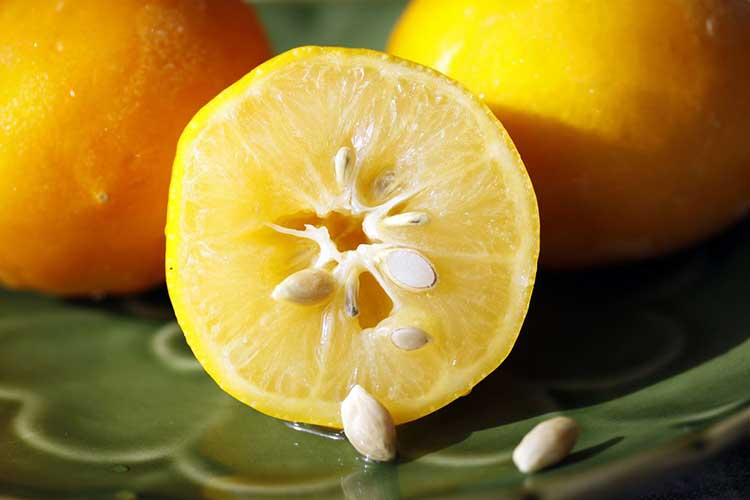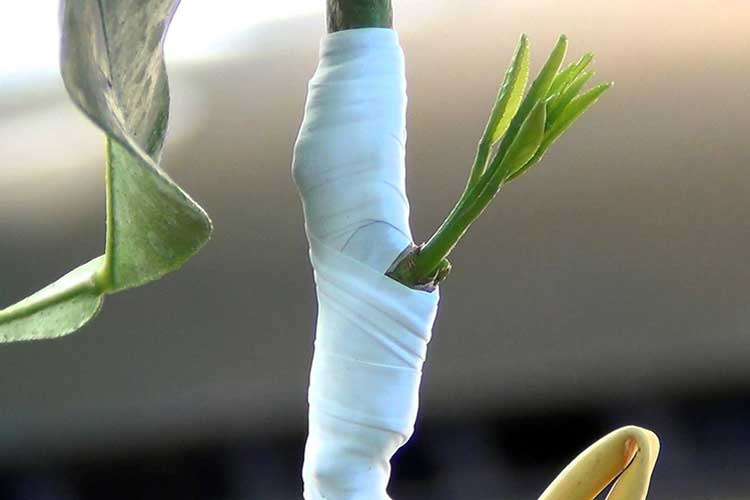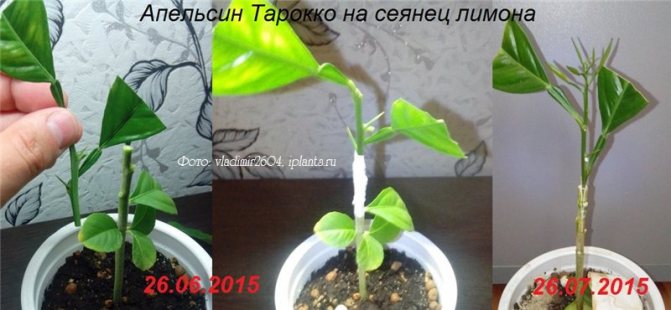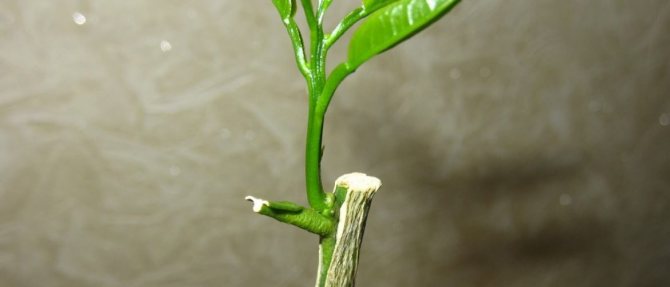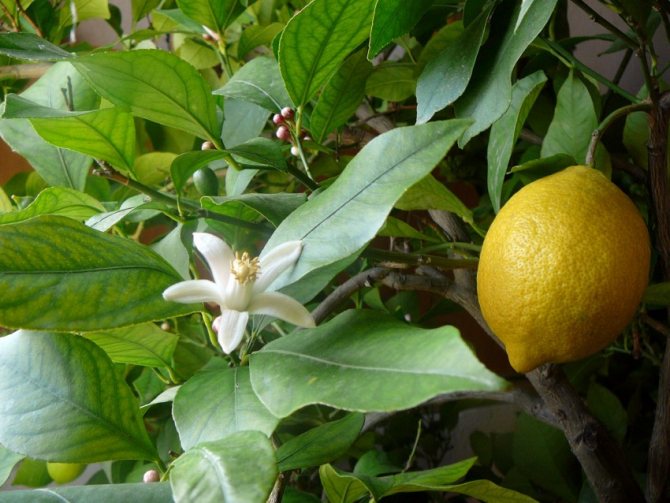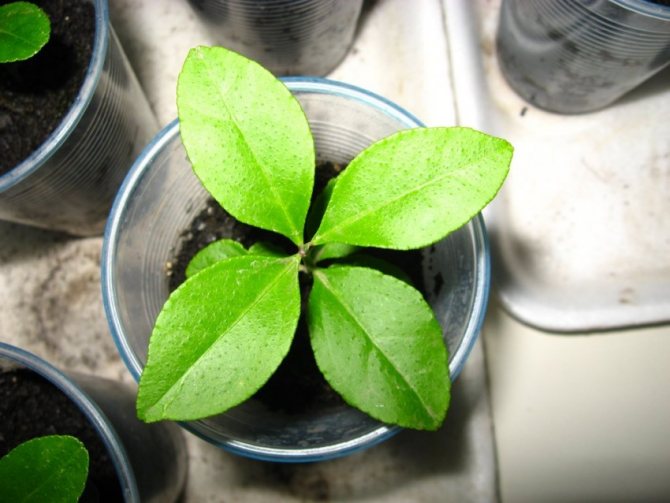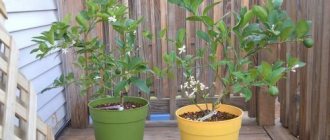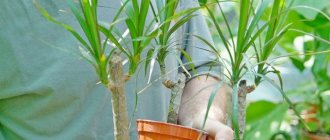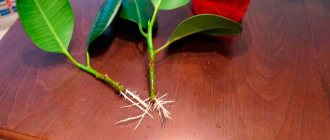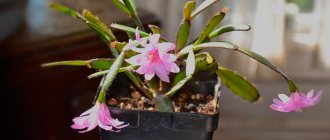Citrus indoor plants are considered not only a wonderful decoration of the home, but also useful plants, the fruits of which are distinguished by the richness of vitamins and amazing taste. However, breeding these southern sweets in the home requires special conditions that differ for each type of fruit. In this article, prepared by the editors of the site, we will tell you about the reproduction of citrus crops at home.
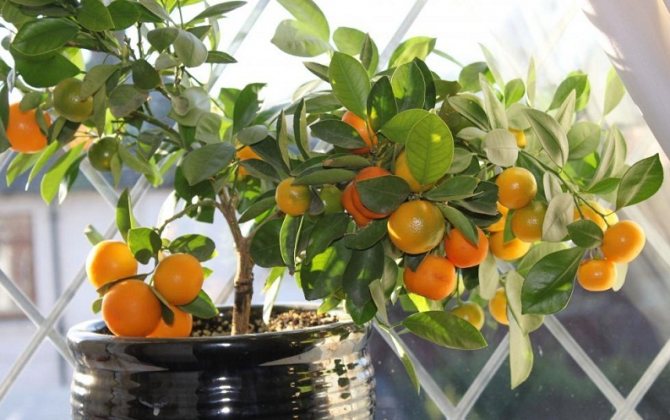
Breeding time
Reproduction of lemon by cuttings is a method common among domestic flower growers. But in order to correctly carry out this procedure, it is necessary to prepare for it in advance. Decide when you are going to root your young indoor lemon first. Experts believe that the most optimal time for this is spring. It is at this time that the lemon comes to life after hibernation, all vital processes are activated.
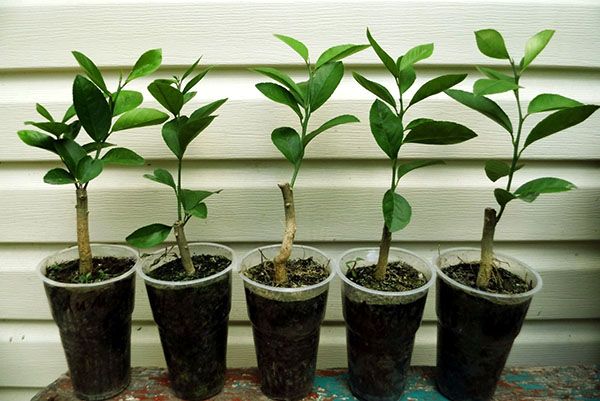

As a rule, it is in the spring that many young shoots appear on the tree, from which in the future you will form the crown. But besides this, you have good material for rooting cuttings in the ground. Some experienced growers do not propagate shrubs in the spring, but prefer to do it in the summer, more precisely, at the end of the season. The heat is on the decline, and you will not have to worry that the sprouts will not be able to take root.
Tropical garden in the house
Knowing about the reproduction of citrus fruits, you will be able to grow a fruitful tree, which, with proper care, will yield magnificent yields of delicious outlandish fruits every year. And you can see the first fruits after a year and a half. Lemons, tangerines, oranges, kumquats and clementines are just a few of the list of exotics that can be grown in your home.
By the way, no more than one vaccination can lead you to a strong passion: you will want to form your own indoor “winter garden” in which various exotic plants will grow. In order to enjoy delicious tropical fruits, you do not have to fly to the other side of the world or go to a shopping center.
Choosing a cutting
Cutting a fruiting lemon at home is a multi-layered process. First of all, take the choice of cutting very seriously. Do not cut young, fragile shoots from the tree. The best option would be a mature twig. Its thickness should be 4–5 mm. Try to choose a sprout based on these parameters.
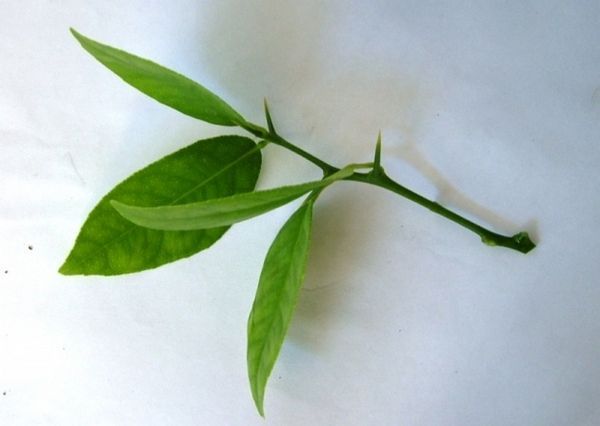

If you take too thin shoots for reproduction, they may never take root in the ground. Conversely, too thick branches take root with great difficulty. Find the necessary shoots on the plant and cut off the cuttings 10 cm long. Remember: several buds and leaves should be left on each sprout. The lower leaf plates are removed so that the process of sap flow does not slow down. But taking a cutting without leaves is also not recommended.
Handyman
- Handyman
- Growing lemon
- Growing lemon - breeding methods
|
BREEDING METHODS
Lemons are propagated in a variety of ways: seeds, grafts, cuttings and layering. Reproduction by seeds.Lemons, unlike many fruit crops, when propagated by seed, give seedlings of a cultivated type with good fruit quality. Therefore, they are best propagated by seed. Lemon seedlings adapt well to indoor conditions.
Plants obtained from sowing seeds begin to bear fruit, at best, from the age of 6. In the period of full fruiting, they enter the 10-15th year and even later. It depends on the variety of seedlings, their care and many other reasons. For example, seedlings of the same variety in more southern regions, where the growing season is long and daylight hours (in summer) are short, begin to bear fruit earlier than in areas with a short frost-free period and long summer daylight hours. Consequently, in this case, the length of daylight greatly affects the fruiting of lemon. The beginning of fruiting is significantly delayed in seedlings with an improperly formed crown and with a large number of young fatty shoots. It is possible to accelerate the fruiting of seedlings by various agrotechnical methods. For example, you can take a bud from a fruiting lemon and inoculate a seedling with it. Do not completely cut off the top of the occulted seedling (leave one branch on the opposite side to the eyepiece). Then the cultivated shoot will bear fruit, as usual, 2-3 years after grafting, but at the same time the fruiting of the abandoned branch of the seedling will accelerate.
In other cases, eyes or pieces of bark (replanting tissue) from a fruiting lemon are grafted into the crown of a seedling. Sometimes they take the lower dormant buds from the seedling and graft them onto young shoots of the same seedling (grafting on itself). In N. V. Ryndin's work, cuttings from a lemon seedling, grafted into the crown of an adult fruit-bearing mandarin tree, fructified at the age of one and a half years; in MI Proskurin, as a result of grafting onto itself, the seedlings fruited in the third year after grafting.
Seedlings can be grown in pots, boxes, etc., and in the south, if possible, it is better on steam beds, so that the plants develop faster and better. For the winter, seedlings from fallow beds are transplanted into pots and stored indoors. In the spring, seedlings along with pots are buried in the ground, and intended for. vaccinations are inoculated indoors and looked after like houseplants. Sometimes in the south, with good care, the thickness of the stem of the seedlings in the first summer reaches 5-7 mm, and the seedlings can be ooculated in the fall.


Seeds for sowing should be taken only well-developed. It is better to sow them immediately after extraction from the fruit, otherwise they quickly lose their germination. You can sow seeds in any dish shallow, 23 cm. The most favorable temperature for seed germination is about 25 ° C. Water for irrigation should be soft. If the water is hard, then in order to "soften" it, it is recommended to add potash (1 tablespoon) or sulfuric acid (1 teaspoon) to a bucket of water. The water temperature is 25-27 °. Under these conditions, seeds germinate approximately 2-3 weeks after sowing. Young seedlings of lemon are very tender, so they need to be protected from direct sunlight and not watered with cold water.
Lemon seedlings can be grown with and without a pick (with root pruning). Cut the taproots with a knife at a depth of 8-10 cm, when the seedlings reach 12-15 cm in height. The branches of the root system must not be damaged by pruning.
The soil must be constantly kept moist. For this, seedlings are watered 1-2 times a day. In summer, the seedlings are periodically fed. In a month give 2-3 feeding with a 1% solution of nitrate and 1 feeding with slurry. Reproduction by grafting. Lemons are mainly grafted with an eye (bud) taken from a fruit-bearing tree grown indoors.
It is better to harvest cuttings for grafting from the second (summer) growth on the branches of the 5-7th order of branching. You should not take the lower branches and fatty shoots on the cuttings.In shoots cut into cuttings, the leaf blade is removed, leaving only the leaf petioles. The cuttings are kept in moist moss or sand.
As rootstocks of indoor lemon, 12-year-old (sometimes 3-year-old) seedlings of lemon and other citrus fruits, raised in indoor conditions, are used. The thickness of the stem of the seedling should be about 5-7 mm at a height of 10-12 cm from the root collar. Seedlings to be inoculated are prepared in advance. Lateral shoots are removed 15 days before inoculation, and the tops are pinched. Before grafting, the stems of the rootstocks, the Shoot and the stalk, are wiped with a wet cloth, one for budding. Then, at a height of 3-5 cm from the ground, a transverse incision of the bark is made first with a sharp budding knife, and then a longitudinal (vertical) incision 2-3 cm long. In this case, only the bark is cut without damaging the wood. The upper corners of the bark are slightly raised with a knife bone. Eyes (kidneys) for grafting are taken from the middle part of the cutting, where they are better formed.
Cutting off the eye should be done with a clean and sharp knife. The cut-off flap "from the knife" is quickly and accurately inserted into the T-shaped incision of the bark on the rootstock. After the shield is inserted, the vaccination site is tied with a washcloth or raffia. You can also use insulating tape as a strapping material. When the kidney takes root (after 2-3 weeks), the bandage is loosened, and after another 2-3 weeks the stock is cut off higher (2-3 mm) from the site of inoculation. Wounds are covered with paint on natural linseed oil or garden varnish.
Budding is best done during the period of active sap flow in seedlings. Outdoors, this usually occurs in August - September. In indoor conditions, budding is best carried out from March to June. The greenhouse can be grafted from March to November. Propagation by cuttings. Cutting is an easy and affordable way to propagate a lemon. Lemons grown from cuttings begin to bear fruit as early as the third year.
In indoor conditions, lemon cuttings planted in boxes or pots root better in summer - in June - July. Cuttings grown in greenhouses or hotbeds at high air humidity and temperature will be less adapted to room culture than cuttings grown in a room. For cuttings, ripened young shoots of the last year 4-5 mm thick from the best fruit-bearing trees are used. Cuttings should be 8-12 cm long with 3-5 buds each. The upper cut of the cutting is made 2-3 mm above the upper bud, and the lower cut 2-3 mm below the lower eye.
Many hobbyists plant cuttings without pruning or shortening the leaves in order to preserve the supply of nutrients in the leaves. To prevent excessive evaporation of moisture, cuttings are covered with glass jars. Under such a shelter, the cuttings form a powerful root system and develop better. In greenhouses and greenhouses, cuttings are planted in clean river sand, covered with a layer of 15–20 cm, and at room conditions - in boxes and pots, into which a mixture of earth and sand is poured.
In hotbeds and greenhouses, cuttings are planted to a depth of 2-3 cm, and in pots - a little deeper, by 4-5 cm. Cuttings are planted in several (2-3) pieces in each pot with a diameter of 10-12 cm.
Planted cuttings are extremely sensitive to sudden temperature fluctuations and direct sunlight. Therefore, as a precaution, the glass of greenhouses is whitewashed from the inside with a solution of lime or chalk, and the pots covered with glass jars are shaded. You can also not water the cuttings with cold water. The best temperature for rooting cuttings is considered to be 20-25 ° C, the temperature of the water for irrigation and spraying should be slightly higher, 22-27 °. On very hot days, the glass jars above the cuttings should be lifted slightly to ventilate.Under favorable conditions, after 3-4 weeks, the cuttings develop roots, after which the temperature in the greenhouse is gradually reduced to the ambient temperature.
For quick and better rooting of cuttings before planting, it is recommended to stand for 10-12 hours in a 0.001% solution of heteroauxin. Reproduction by layering - rooting of shoots without prior separation from the mother plant. This breeding method in indoor conditions is rarely used.
Layers are simple, horizontal and airy. Lemons are propagated by simple layering if the tree has two or more stems. On one of them, a bark ring 5 mm wide is removed near the ground. Then this place is covered with earth, which is constantly kept in a moist state. Roots soon appear on the stem. After that, the rooted stem with a saw or pruner is carefully separated from the mother plant and transplanted into a separate dish. Hanging branches can be used for horizontal layers. To do this, the branch is ringed, a dish with earth is placed under the ring and the branch is pinned, then the branch is sprinkled with earth on top so that its end goes out. During the rooting period, the branches are kept wet. The rooted twig is separated from the tree and planted in a separate bowl.
Air layers are obtained from branches in the crown. To do this, remove the bark ring on the branch. The ringed place is tied with moss or absorbent cotton wool. Then, on both sides of the ringed place, a pot or other utensil, sawn in half and filled with earth, is attached. The earth is moistened all the time. The rooted branches are carefully separated from the mother plant and planted in a permanent place.
Tip: Lemons can bear fruit without cross-pollination. When self-pollinated, they give even the best, low-seeded fruits.
The site has:
Growing lemon - fertilization and watering Growing lemon - root system and crown How to grow lemon on a windowsill Flowers and ornamental shrubs in a summer cottage How to place flowers Spices and aromatic herbs To flower growers - Flower care. Accelerated growth of flowers cut in the early stages of bud development. Preservation of colors using chemicals
Rooting prerequisites
Cutting lemon requires careful preparation of the shoots themselves. But you need to know not only how to plant a lemon at home, but also what recommendations should be followed, and what nuances should be given more attention. Anyone can propagate a lemon by cuttings, but on condition that an optimal microclimate is created in the room. Observe the temperature regime of 20-25 degrees if you want to successfully cut lemon.


Another important point is lighting. Planting a lemon with a cutting will bear fruit if there is a lot of light in the room. But do not place a flowerpot with citrus plant shoots in the southern part of the house. So far, the sun's rays are useless. Natural lighting should be diffused. The main focus is on artificial glow. Keep in mind that it is important to maintain a high level of humidity in the room for growing lemon from cuttings. In addition, regularly spray the shrub with warm water.
Preparing the "greenhouse"


In the meantime, the cuttings are "cooling off", you can start making a kind of mini-greenhouse. A transparent one and a half or two liter plastic bottle is suitable for this, which I cut into the upper and lower parts. The top is about 2/3 of the bottle and the bottom 1/3 of the bottle, respectively. The lower part will serve as a container with filler, and the upper part will serve as a dome that creates the necessary moisture inside.In the lower part, I make holes for the drainage of excess water, because after rooting, I leave the cuttings to grow further roots in the same container and the holes are necessary to prevent stagnation of water and souring of the roots. The holes can be made either with an awl heated on a fire, or simply with the sharp end of scissors, or with any other tool. More often than not, I just take a plastic cup and cover it with the upper cut off part of a plastic bottle.
Landing rules
How to plant a lemon stalk correctly? Choose a small pot first. Ultimately, the plant will reach decent dimensions, but it will be necessary to increase the capacity for the flower gradually. Be sure to provide for the presence of drainage in the flowerpot, then excess moisture cannot linger in the pot. As for the material, you can opt for almost any of them. However, the best option is clay.
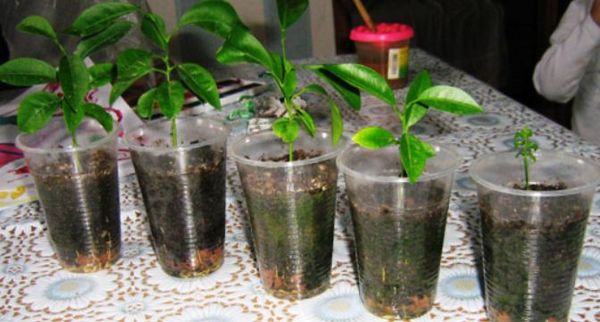

Types of cuttings
Lemon multiplies in several ways today. Some of them are quite simple and accessible even for beginners, others require certain skills in working with fruit trees.
Vaccination
For reproduction in this way, shoots obtained from seeds are taken as a stock. The cultivar of lemon, adapted for growing at home, acts as a graft. It is permissible to use other types of citrus fruits for these purposes, with the exception of mandarin.
The grafting is done when the plant has an active sap movement, that is, in spring or summer. It can be done in a split or in a butt. When performing work, it is required to use carefully disinfected tools, otherwise it is easy to infect the plant, and it may die.
Oculated
The budding method consists in inserting a bud from a fruiting tree into a T-shaped incision made in the bark of the rootstock. It is recommended to use 2-3 seedlings for these purposes, the thickness of which has reached the size of a pencil. The place for the vaccination is chosen at a distance of 5-10 cm from the ground level.
After budding, the place is carefully bandaged. If after 2-3 weeks the petioles fall off, then the procedure is considered successful. If they are observed to dry out, then the inoculation was unsuccessful. After 30 days, the upper part of the rootstock is cut off, leaving 10 cm above the graft site. After the sprouting of the eye, a cut is made directly above it.
Rooting
When rooting by cuttings, an exact copy of the parent plant is obtained. On average, the flowering period of the bush can be expected for the 3-4th year. Modern growth stimulants greatly increase the chances of survival of cuttings, therefore this method of lemon propagation remains one of the most popular.
Air layering
The advantage of propagation by layering is to obtain an almost 100% result. The disadvantage is the cumbersomeness of the method and the need for time to carry out the work. For reproduction, a pot with nutritious soil is installed next to it. Several cuts are formed in the branch of the parent tree, tilted and pinned, and then covered with earth. In places of damage, root segments will begin to form, after 2 months a clone can be cut off.
Airy Chinese layering involves the formation of a cut on a branch in the spring, followed by covering the site of damage with moss, it is wrapped in a film, periodically moistening sphagnum. It provides the plant with moisture and a bactericidal effect, as a result of which roots are formed at the cut site. With their sufficient formation, the layers are separated from the parent tree and planted in a separate container.
Rooting the cutting
Rooting cuttings at home is not so difficult. To do this, cut off the necessary shoots from the tree and be sure to process the edges with ash. Thus, the cut site will not rot. A rooted twig will get stronger much faster if at one time sprinkle it not only with ash, but also with a growth stimulant.When the twig is prepared, it is rooted in the ground. Immediately after the end of the procedure, the cutting should be watered. Be sure to provide a hiding place for your indoor lemon.
Another key point: don't expose your citrus cuttings pot to open sunlight.
What exactly does the process of rooting a planted lemon shoot consist of:
- take a flowerpot and put some ash or coal there;
- the next layer is the main one. The soil mixture should include turf and coniferous soil, as well as sand;
- it is better to root the cutting directly into a layer of sand mixed with moss;
- Stick the citrus plant buds into the soil and then spray them thoroughly.
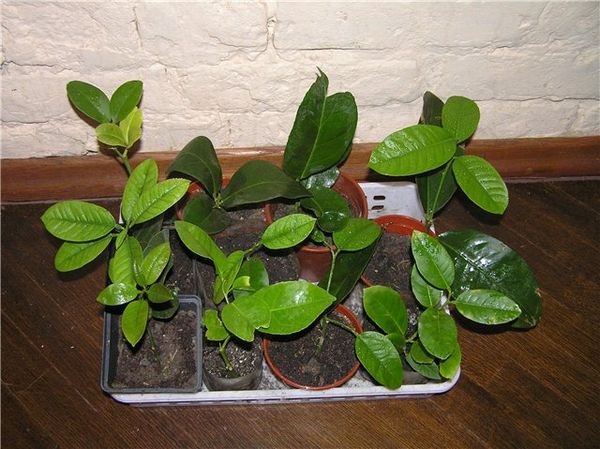

Knowing how to root a stalk, you will be able to pick ripe lemon fruits after 3-4 years and taste them.
We prepare the material
Only healthy plants are suitable for cutting cuttings. The cut is carried out as follows:
- Correctly cut it from the main plant, capture up to 3-4 leaves.
- Perform the procedure with clean and disinfected (calcined) instruments.
- The cut site is treated with garden pitch.
- Excess leaves from the branch are removed, and the rest are pruned.
- For acceleration, the cut material is left in a solution of epin or other growth stimulants.
It is important to choose the right period when to cut. It is impossible to carry out the procedure during the period of active movement of the juice - be sure to wait for the end of active growth. It is advisable to plant the fruit during the warm season, in the middle of spring or early summer.
Further care
By rooting a stalk of homemade lemon, you will get a young, but not yet mature tree. In the future, the intensity of its development and the formation of fruits will depend solely on you. That is why bush care must be of high quality. While the plant is small, take your time with bright lighting. The tree gets used to it gradually, and this must be taken into account. It is very important to create an optimal microclimate for a citrus flower. The air temperature should not change dramatically, as this is stressful for the plant.
Pay special attention to feeding. They are carried out from the very beginning of spring to mid-autumn. Organic and mineral compounds are recommended to be applied alternately to the substrate. Thus, the indoor tree will receive all the necessary elements for development. Some growers prefer to buy complex nutritional mixtures. They are useful, the main thing is to buy a dressing designed specifically for citrus indoor flowers. Take care of rooted lemon cuttings and one day you will get a healthy plant that will not only decorate your home, but also bring you healthy fruits.
Post-vaccination activities
To obtain a citrus fruiting plant, it is necessary not only to properly graft, but also to perform several more operations after it. That is, human participation is not limited to budding alone. What needs to be done later is critical to the success of such a responsible action.


Transplanting a seedling
If the bud has taken root, it is recommended to transplant the plant into a larger pot. As a rule, the rootstocks are grown in cups. However, the volume of soil in a small container is not enough for the development of the root system and full nutrition of the growing tree. It is necessary to transplant by the “transshipment” method, that is, without destroying the root system (!), By transferring a clod of soil to another pot with the introduction of a soil substrate.
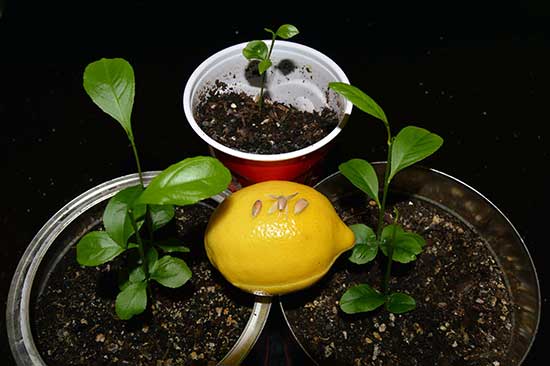

This operation is performed after grafting on a 1–2 year old stock. Mature trees in large pots are not affected.
Elimination of rootstock buds
During the time that the graft takes root, buds in the axils of the rootstock leaves may awaken. They must be removed in a timely manner so that they do not intercept part of the food that should be addressed to the vaccination site.If the growing lobes lack nutrient juice, the vaccine may not take root. It is necessary to direct as much food as possible to the fusion site.


It is necessary to remove (blind) the buds very carefully so as not to spoil the leaves of the rootstock - they are extremely important for the nutrition of the plant and the formation of the scion.
Growing a full-fledged tree from a cutting
A young, weak tree should be looked after carefully, following all the recommendations of experienced citrus growers. You should know how to grow a lemon at home even before planting it, because this procedure has many nuances. Growing lemon cuttings at home is carried out in a humid climate created for the plant (in a greenhouse). Plants that are planted under these conditions actively take root with sufficient moisture and heat. After 6-7 weeks, the plants will take root, but you should start replanting citrus fruits later, when the trees get used to living at room temperature. How to grow a lemon from a cutting:
- After the formation of roots, it is necessary to spray the tree 3-4 times a day. The plant needs a lot of moisture to grow.
- Clean the greenhouse daily for 5-7 minutes, gradually increasing this time.
- After 2 weeks, the greenhouse is removed.
After acclimatization, the tree is carefully pulled out of the temporary tree along with the roots and placed in a new pot. Its initial volume should not be large. Enough 0.5-0.6 liters. Planting in large pots is impractical: the plant will develop slowly or die. The soil for replanting is the same.
You can also prepare a slightly modified version of the soil. Ash drainage should be poured into the prepared container. The next layer is a mixture of sand, turf and coniferous soil. Above - moss and sand. Sometimes an equal proportion of sand and moss is used to plant lemon.
After two weeks, the cuttings should be planted in separate pots.
When to expect the first harvest?
Indoor lemon can bloom already in the year of planting, but it will delight you with fruits only three to four years later.
Compared to trees grown from a stone, this is two to three times faster and with a much higher degree of probability, and therefore, having planted a small stalk, do not doubt that you have chosen the right way to propagate indoor lemon.
The one that is planted in open ground will just finish rooting in its first year and, under good conditions, will be able to prepare for wintering. It will delight the gardener with flowers and fruits in a couple of years after planting in open ground.
How to dilute a lemon. How to grow lemon at home - indoor citrus fruits from seedlings and seeds
Tell us how to grow lemon at home? My daughter wants to plant a seed, but I'm leaning towards the option with a seedling. Here, on the weekend I plan to go shopping for it. What does a homemade citrus tree need to grow well?
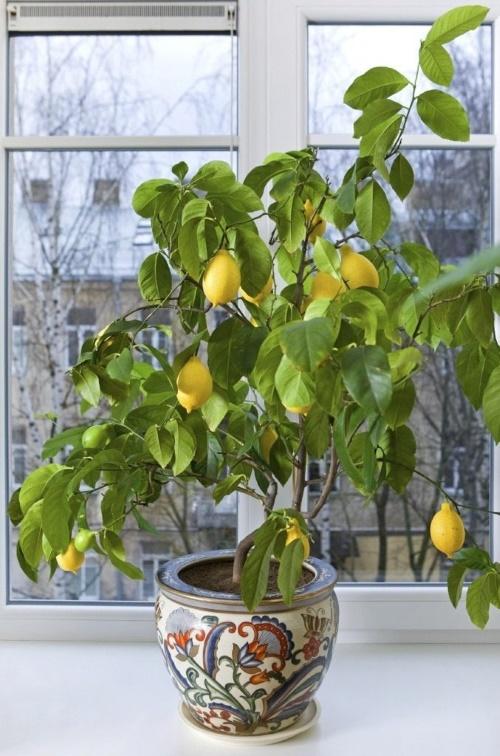

Among indoor ornamental plants, it is worth highlighting lemon trees. Thanks to the glossy dark foliage and easy-to-shape crown, they look very beautiful. In addition, with proper care, they will also delight you with fragrant vitamin fruits. Of course, lemons are always on sale, but homemade ones are tastier, and even more so - healthier. There is nothing complicated about how to grow a lemon at home. After the next purchase of exotic fruits, simply do not throw away the seeds, but plant them. And you can make it even easier - if possible, buy a young seedling in a flower shop and surround it with care and attention.
Under indoor conditions, undersized lemon varieties are most often grown. Among them are Canadian lemon, Chinese dwarf and Genoa. Their height does not exceed 1 m, moreover, the fruits are delicious, because they are lemon-orange hybrids. Slightly higher and sour lemons are Lunario, Maikop and Pavlovsky.
Growing homemade lemon from a seedling
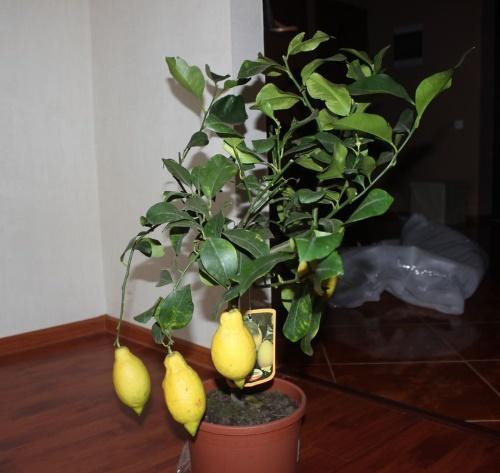

The fastest way to get a beautiful tree and drink tea with the first sour fruits is to buy a ready-made seedling in the store. The first step is to transplant it from the transport soil into nutritious light soil. For the first time, a pot with a volume of up to 2 liters is enough. Don't forget about drainage - it will keep the roots from rotting.
Lemon soil can be made at home by mixing sand, humus and turf soil in equal parts.
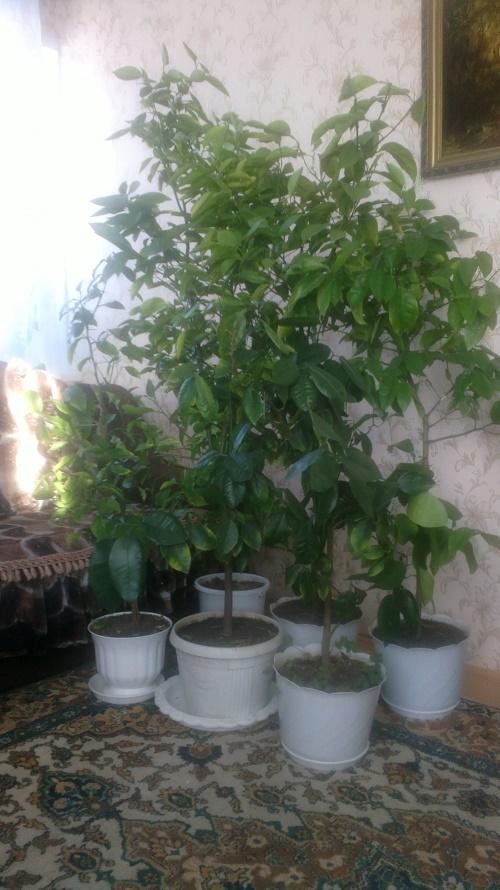

Lemon loves the sun, but it is better to choose a place where the lighting will be diffused. But in winter, when the day is shorter, the plant will feel better on the window.
Caring for indoor lemon is simple and includes:
- Daily watering in summer and less frequently (once a week) in winter. Do not use cold water to avoid provoking illness. Spray the canopy often in summer, especially if you take the lemon outside. In winter, it is enough to simply wipe the foliage with a damp sponge.
- Regular seasonal feeding. Get a special mineral complex - it contains the full range of nutrients that citrus plants need.
- Annual transplant. Transfer the bush along with a lump of earth into a larger flowerpot, but you do not need to take too large dishes. In it, the soil remains moist longer, which is fraught with the occurrence of fungal infections.
- Pruning. In spring, shorten the long shoots and cut the branches that grow deeper into the crown. This will help the tree look beautiful.
How to grow lemon from seed at home?


If you decide to go through all the steps on your own and nurture your citrus pet, choose large seeds from a large lemon. Then everything is simple:
- pour the substrate into small pots with drainage holes;
- moisturize it;
- plant a bone, but do not bury it too much - 2 cm is enough;
- if desired, cover the container with foil, but you can do without it;
- place the flowerpot on a light and warm windowsill.
After about a month, you will see a green sprout emerge from the ground. When the seedling grows to 4 leaves, transplant it into a large bowl and care for it as you would a store seedling. The only thing worth considering is that a lemon grown from a stone will not begin to bear fruit soon. If you do not want to wait 5 years, or even 3 times longer, it is better to plant your lemon.
Benefits of cuttings growing
Reproduction of lemon by cuttings at home has the following advantages:
- Rapidity... A plant grown from a cuttings develops faster, and therefore begins to bloom and bear fruit faster. Compared with the lemon grown with their seeds, then the time savings can be 1-2 years in the case of grafting and 5-6 years if the tree is not grafted.
- Preservation of varietal properties... If you grow a lemon from a seed, then a wild will grow. Even if he once forms the fruits, they will be small and tasteless. If the tree grows from a particle of an adult plant, then it will retain all its qualities, and therefore it will not need grafting.
- Simplicity... Rooting and planting lemon cuttings is an easier procedure than growing citrus from seed and then grafting it, which requires specialized skills.
There is only one drawback to cuttings. It lies in the fact that a tree grown from a cuttings has a less developed root system. Therefore, a plant that produces many fruits at the same time may suffer from a lack of nutrients, despite the fact that the soil contains them in abundance.
Conditions for bearing lemon and the fight against its diseases
Watering
Lemon loves moderate humidity and does not tolerate drought or high moisture. But he loves a shower very much, when he is sprayed or bathed in the bathroom under the shower, using a spray bottle: spray the leaves with water 3-4 times a week. An excess of moisture leads to decay of the roots, and a lack of moisture leads to an attack of mites.
Top dressing
Lemon is very picky about feeding. You need to apply fertilizer once a month, complex, better for citrus fruits. If the leaves begin to turn yellow, then you need to apply fertilizer with a high content of magnesium.
As a fertilizer, you can use slurry, sawdust and ash, as well as mineral fertilizers, which contain nitrogen. You can add a couple grams of zinc or copper.
Flowering and fruiting
Lemon blooms from spring to autumn. Blooms most abundantly in March. To accelerate flowering, you need to pinch the plant. When new shoots grow, they must be pinched or cut off so that there are 3-5 leaves on the shoot. With this method of growing, the lemon will look compact, the leaves will be larger. Flowers are of two types, barren flowers and with lemon. The flowers have a large pistil, which means that a lemon will be tied from this flower. Experienced lemonologists believe that 9-10 leaves are fed to each fruit. Depending on the number of leaves, you need to leave the harvest.
On a lemon, you need to leave 3-4 tied lemons, the rest of the buds need to be picked, otherwise the flower will throw off the tied lemons, and there will not be enough strength to tie new ones. I collect the collected flowers and buds and dry them, then add them to tea, the aroma of tea cannot be conveyed, you just have to try it.
The fruits ripen from 6 to 10 months, depending on the type of lemon. The weight of a lemon can be from 50 g to 600 g. But the long wait is worth it.
Diseases, pests and ways to control them
As a result of mistakes in care, the introduction of insects with new plants from the outside, the weakened plant is affected by diseases and pests. Homemade lemon can be affected by scabbard and spider mites, these are the most common diseases. Disease prevention is regular spraying with water. If you notice brown plaques and smudges on the back of the leaves, then this is a scale insect.
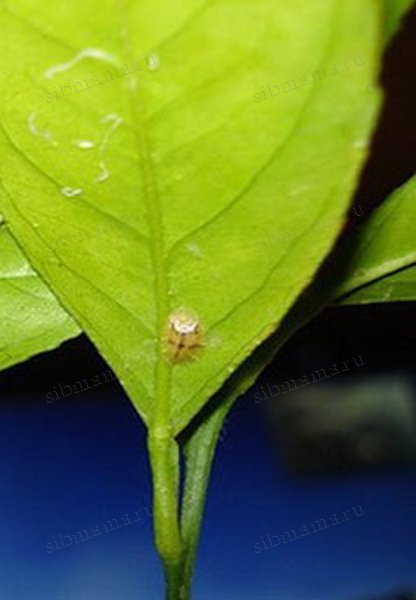

It needs to be treated with acaricides. You can also process folk remedies. Collect the scabbards with a damp cotton swab and treat with a solution of soap with kerosene (for 1 liter of water, 40 grams of soap and 5 drops of kerosene). Or grease the leaves with onion and garlic gruel (1 teaspoon per glass of water), thus depriving the pests of the opportunity to drink the juice of the plant.
Lemon leaves can also be damaged by spider mites. If white thin threads are noticed on the branches and on the underside of the leaves, then this is a spider mite. The spider mite does not tolerate moisture, the plant must be rinsed under the shower and the leaves must be treated with laundry soap, put on a plastic bag on top and create humid greenhouse conditions. You can treat the leaves with a daily mixture of grated onions and garlic, one teaspoon per 1 liter of water. Spraying should be carried out three times with an interval of 7-10 days.
Transfer
The transplant should be done at the end of winter, at the beginning of spring. Before the appearance of the first fruits, the plant is transplanted every year, increasing the volume of the pot by 2 cm. Further, the transplant is carried out every 4-5 years, while between transplants we do not forget to change the top layer of the earth.
Here is my experience in growing lemons, I have two varieties of lemons - Panderoza and Meyer. The former has very large fruits, a thick lemon, the latter has small fruits with a thin skin.
Have a good cultivation experience and a pleasant tea drinking with delicious do-it-yourself lemons.
I have been cultivating plants - first gardening, and then gardening - for more than half a century. Although the Siberian climate does not allow you to successfully do this without certain efforts, skills, additional labor costs and, if you like, tricks. Our site is located 20 km from Tyumen, on the banks of the Tura River.
In addition to root dressing of lemon, I do not forget about foliar dressing. I carry out spraying with growth stimulants and adapogens: Ecobrin, Healthy Garden, HB-101; and just sprinkle the lemon crown with warm water.This is especially necessary to do in the winter period of the life of a lemon in an apartment, when, in addition to these conditions, it is necessary to maintain a favorable temperature regime and illumination. My tree stands by the window with the heating battery turned off, and with an organized one.
I will tell you a little about the lemon transplant. Transplants as the lemon tree grows is a prerequisite for its normal development. For the first two years, I spent the plants in a slightly larger container (about 1.5-2 cm larger in diameter) twice a year. Then she passed the grown tree only once a year, in the spring. I prepared the substrate for lemon as follows: I mixed purchased soil for citrus fruits with garden soil, humus and; sometimes I poured a little sand and coconut substrate - I added everything by eye.
These are the conditions for keeping my pet. It is troublesome, of course, to keep a lemon tree. But on the other hand, it is very interesting, and it is so pleasant to feel the "gratitude" of a fertile pet!
How to plant a grafted lemon. How to grow a lemon tree
Twigs with a thickness of 4-5 mm and a length of about 10 cm will fit as cuttings. The cut is made under the lower bud and above the upper bud. 3-4 formed buds and 2-3 leaves are left on the handle. The twig is treated with a root growth stimulant and placed half its length in water, where it is kept for three days.
Cuttings of homemade lemon are rooted in boxes or pots filled with the following mixture in equal amounts:
- humus;
- coarse sand;
- flower land.
It is necessary to dig the cuttings into the compacted soil to a depth of 3 cm. Since at this time the cuttings have not yet sprouted, they cannot receive moisture from the soil in sufficient quantities, therefore, the leaves of the lemon tree must be sprayed daily.


The subtleties of growing a lemon tree.
Try to moisten the soil well, but do not let the liquid stagnate. The optimum temperature for rooting cuttings is an air temperature of 20-25 degrees. Finally, cuttings of a lemon tree take root for 30-45 days. After that, the homemade lemon tree is transplanted into a small pot.
Preparing the soil
For planting at home, experienced gardeners recommend preparing the soil for planting from several layers.
- Lower - drainage, for which you can use fine expanded clay, pebbles or shards.
- The second is a nutrient layer (a mixture of forest and sod soil with a ratio of 1: 1).
- The third is water-retaining, consisting of sphagnum moss. Ordinary peat is also suitable for this purpose.
In order to root lemon cuttings in the open field, it is equally important to properly prepare the soil.
For this:
- We create a trench about one and a half meters deep in length and width. In the process, we divide the soil into two parts: the more fertile upper layer - to the southern edge, the lower, poorer - to the north.
- The northern wall of the trench is made strictly perpendicular, and the southern wall is cut at an angle of 45 °, thereby narrowing the bottom of the pit to 80 cm.
- On clay soils, drainage is created with sand or pebbles at the bottom.
- On the steep slope of the trench, a shield is created from boards, slate or any other material, which is then whitewashed - this will direct the sun's rays to the sprouts.
- Agrofibre or a dense black film is spread along the southern slope to protect against weeds.
- A rampart 40-50 cm high is poured from the north to protect it from the wind. You can use the ground tilted to this side for this. A nutrient substrate is prepared from the discarded fertile layer, for which it is mixed with compost, peat or humus.
- A polycarbonate "gazebo" is installed above the trench.
Pros and cons of lemon cuttings
Each method has its own advantages and disadvantages. There are pluses:
- Preservation of parental genetic material.
- A tree bears fruit earlier than a plant that has grown from a seed.
- This method is much cheaper than buying a ready-made seedling.
- Vaccination possibility.
The downside is that when grown from a seed, the plant will grow more actively and will be less resistant to diseases. But since this method has more advantages, gardeners often resort to using it. Propagating a lemon is not so difficult. To grow a healthy tree, follow the instructions.
Sprouting a branch at home
This method is suitable for multiplying lemon at home and getting a new fruiting plant.
In the first case, the branch is cut from a decorative tree, in the second - from a fruitful variety. Light, loose, nutritious soil is prepared for the branch;
- make 3 layers in a pot: drainage, nutrient layer, moisture-retaining layer (sand, sphagnum moss);
- the thickest nutritious layer;
- planting a lemon cuttings is carried out in damp ground.
A branch from a pruned tree is rooted in the ground. Then greenhouse conditions are created for the young plant:
- covered with foil or polyethylene;
- maintain moisture under the cover;
- illuminate with indirect sunlight;
- make sure that the temperature does not fall below 20 ° C.
Once a day up to 5 minutes. they are ventilated, adapting to the conditions of the room. Every day the time is increased by several minutes. After 10 days, when rooting has occurred, they are exposed from under the cover.
Plants now need regular care. A year later, transplanting into a larger pot is required. Propagation by cuttings requires thorough preparation and adherence to the rules.
Choosing a capacity
When choosing a pot for a lemon tree, two criteria are taken into account.
- Material - wood, ceramics, plastic are suitable;
- Size - the lemon tree is transplanted into a larger pot if the roots of the plant are visible. The roots are only visible in places - a pot of the same size is chosen.
As for the shape, the branch is not whimsical - it will be satisfied with a container of any configuration. For an adult fruiting plant, it is better to choose a cone-shaped pot. In any case, the lemon tub should provide good drainage.
If we consider the aesthetic aspect, lemon looks very beautiful in a ceramic pot of white or terracotta shade. If a tub with a pattern is chosen, then it should combine in color and ornament with the pots of neighboring plants, then an attractive and harmonious composition will turn out.
Conditions required to grow a tree
As in any business, every detail is important here, and therefore we start preparing for planting a new tree with choosing the time to prepare the cutting. The tree must go through a period of decay of the next growth cycle - there are about four such cycles per year, and they are not very attached to the season.
The best time will be the end of such a cycle in March-April, when the tree wakes up from hibernation and the flow of new sap begins in it. These indicators do not depend on the variety, so feel free to choose any tree that you like, and feel free to proceed with further preparation.
The only thing to consider at this stage is that if you want to achieve fruiting from your tree, the lemon from which you cut the stalk must already be fruitful - an adult plant that has already borne fruit. You need to carefully prepare both the planting material and the landing site.
Advice. If you are planting lemon outdoors, then spring is also the best time, as lemon is a thermophilic crop.
Propagated by air layers
For lemon propagation, there is a method with air layers. It is much simpler than the previous ones. But it is believed that plants obtained from such roots grow weak. To plant a plant with layering, you need:
- make an incision near the base of the branch on the bud;
- remove the bark from the incision;
- take cling film and tightly wrap air layers on the plant; there must be peat in the cling film.
After 1-2 months, the formed roots will be visible through the film.
The next step is planting roots in the ground.To root them, they are cut below the cocoon and placed in neutral, non-acidic soil. Rooting takes place in a greenhouse. The transplant of such plants occurs as they grow.
Growing lemons at home is not an easy task. Care for both young and mature plants should be appropriate.
How to build a greenhouse for lemon seedlings
To form a greenhouse structure in order to better plant survival, ordinary transparent plastic bottles with a volume of 2 liters are used. To do this, the upper part is removed, and several holes are formed in the bottom, after which the rooted shoots are covered with the remaining part. Some growers use ordinary glass jars to create a greenhouse or cover the sprouts with a plastic bag.
For better root formation, cuttings are recommended to be left overnight in Epin or Heteroauxin nutrient solution before planting. A loose and nutritious soil should be provided, therefore, when placing in a pot, the soil should not be strongly tamped. For good plant growth, the nutrient layer of the earth should occupy at least 2/3 of the container.
A lemon tree grown on a windowsill can give a good harvest, but it will take a long time to wait for the first fruiting - 4-7 years (depending on the variety). Reproduction of lemon by cuttings at home will allow you to get the desired harvest 1-2 years earlier.
Cutting lemon will reduce the wait for the first harvest
Cutting a lemon is technically more difficult than propagating by seed. A citrus owner should be aware of all the features of preparing, planting and caring for seedlings.
Features of lemon root formation
Rooting will be more effective if good drainage is made. Excess water should not linger in the pot. Other nuances of root formation relate to soil preparation and planting in temporary sites:
- In the prepared pot, the soil is laid in layers. The bottom one is charcoal, and the next one is a substrate of humus, earth and sand.
- A 3-4 cm depression is made in the ground.
- A stalk is placed in the prepared hole and buried so that the second peephole rises a few millimeters above the soil level.
- The future tree is sprayed with warm water.
- Equipped with a mini greenhouse. The lemon tree is covered with a glass jar.
There is a lot of information on how to root a citrus stalk. Some experts recommend additional work with the seedlings. Before you plant a lemon at home, you should start stimulating its growth.
The cut cutting is subjected to leaf removal. This is necessary for the correct organization of the movement of the juice. Cut off the top of the planting material by 1/3.
After the operations, the collected seedlings are stimulated to grow by placing them in a weak solution of heteroauxin (1/1000) for a day. Another option is to use ash. It should be smeared with cuttings, which will protect the lemon tree from rot.
Before planting, cuttings should be treated with heteroauxin.




